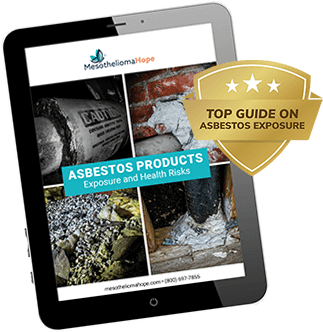Asbestos in Heating Ducts Explained
Heating ducts in residential and commercial buildings may result in dangerous asbestos exposure from many different sources.
For years, lagging cloth and asbestos paper was used by the HVAC industry to line and insulate pipes in heating and cooling systems within homes, offices, and other buildings.
Paper, cloth, and other insulation materials are often used to repair potential weaknesses in the heating ducts and reinforce the overall system.
For example, an adhesive is applied to any area along the duct system that is experiencing, or could encounter, an outflow of air, and may then be wrapped with insulating cloth or paper.
In some cases, duct dampeners are used to reduce vibration and secure flexible joints.
Asbestos in HVAC Insulation
In the prime of asbestos use, lagging cloth, duct dampeners, and other duct wrappings usually contained asbestos fibers.
Insulation manufacturers used asbestos because it was inexpensive and had many desirable properties. Asbestos is durable, heat- and fire-resilient, easy to use, and has superb soundproofing qualities.
Asbestos was considered an excellent component for insulation. As a result, asbestos-containing cloth and pipe wrapping paper were used in many heating and cooling systems built or installed prior to the 1980s.
Today, North American lagging cloth brands no longer contain asbestos. However, many homes built or renovated before the 1980s will still have lagging cloth, dampeners, or asbestos paper that contains asbestos.
Who Was Exposed to Asbestos in Heating Ducts?
Anyone who worked with or near asbestos-containing heating ducts are at risk of deadly health consequences. Family members and close friends of individuals who worked with heating ducts may also be exposed to asbestos, as fibers can transfer easily to clothing, vehicles, and work materials.
The following people are at the highest risk of exposure to asbestos in heating ducts:
- Insulation factory workers
- HVAC workers
- Steel and duct workers
- Construction workers
- DIY homeowners
- Family members
Although manufacturers stopped using asbestos in heating duct insulation, people who work with HVAC systems built before the 1980s are still at risk of exposure today.
These individuals should take care to use proper precautionary equipment when cutting, removing, or otherwise disturbing heating ducts that may contain asbestos.
Fortunately, undisturbed asbestos is harmless. It’s only when the asbestos is moved or damaged that the fibers become airborne and put people at risk of inhalation.
If you have heating ducts containing asbestos in your home, you’re advised not to remove the pipe wrap on your own. Instead, call experienced asbestos abatement technicians for assistance.
Health Risks of Asbestos in Heating Ducts
While the cause of many cancers is still unknown, mesothelioma is a very clear exception. Scientists have proven that mesothelioma occurs after a person is exposed to asbestos.
When asbestos fibers are damaged or disturbed, they can become airborne. Airborne fibers can be inhaled or ingested by anyone nearby, often without a person even knowing.
Once these asbestos fibers are in the body, they get stuck in the body’s natural lining, and the body has no mechanism for removing the lodged fibers.
Asbestos fibers are known to trigger a mutation in nearby cells, changing previously healthy cells into dangerous, cancerous cells known as mesothelioma. Over time, these mesothelioma cells grow and spread throughout the body.
Mesothelioma is extremely aggressive and challenging to treat. Mesothelioma can take decades to develop, slowly taking hold within the body, before symptoms present themselves.
By the time symptoms are noticeable, mesothelioma is often in its later stages, when it is exceptionally difficult to treat.
Although scientists are actively working on methods of detecting mesothelioma earlier, it remains a challenging disease to diagnose and treat. Unfortunately, most diagnosed mesothelioma patients have a life expectancy of less than one year.
Seeking Justice for Asbestos Exposure
Many honest, hardworking people developed mesothelioma as a result of working with asbestos in heating ducts. These Americans are now battling a deadly disease and enduring the unfair impacts of their unnecessary exposure.
If you have mesothelioma and worked with asbestos heat ducts or other asbestos-containing materials, contact the Justice Support Team.
Our specialized experts will help you find out exactly how you were exposed to asbestos, including when and how, so you can begin building a case to receive legal compensation for your treatment costs and damages.



